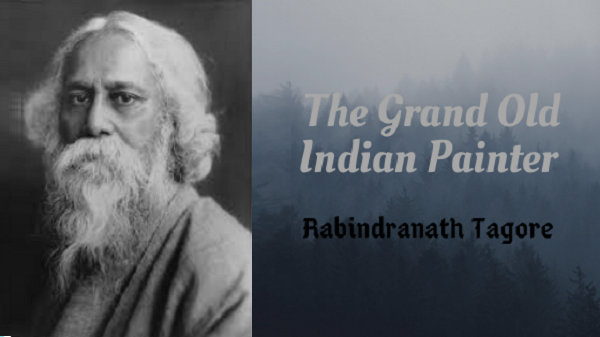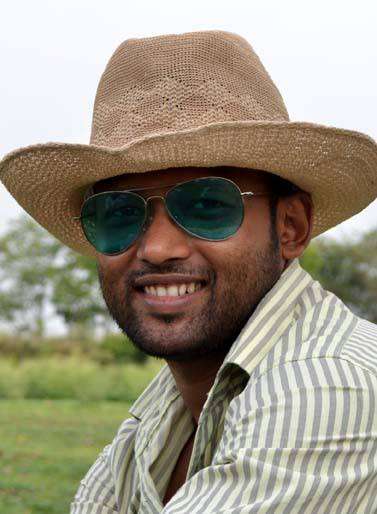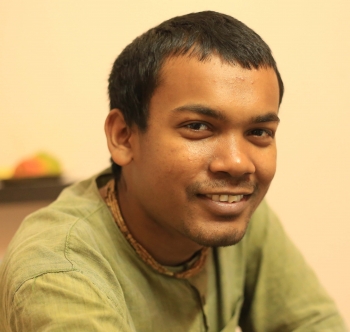
Rabindranath Tagore was one of the most influential and popular figures of his time. With his intellect and wisdom, he influenced and inspired many people. He was the first Non-European and Indian who received a Nobel Prize for literature in the year 1913. Being born into a rich and elite family, he was home tutored by many good tutors and his siblings. Though he has ventured into different and diverse forms of art throughout his life like he is a well-known Indian painter and best known for his poetry and short stories.
He started painting at the age of sixty. But, he was a prolific painter and even though he started his journey in the field of painting after completing 60 years of his age. He was associated with Brahmo Samaj and reformed the society with his essays, dramas, novels, and philosopher.
Doodling the Unimaginable
Tagore didn’t start to paint altogether. His first adventure in art was doodling. Generally, he would write something and cut across the lines. He would then try to fill up the overwriting with his intuitive imagination into something that would turn out to be some shape of a thing that doesn’t exist in reality. He let his emotions and imagination take the reins while indulging in art.
Also Read: Meet the Famous Painters of India
He would often try to intermix reality with his creativity. Most of the figures that he had drawn resemble some sort of an animal or creature that seems to be extra-terrestrial. He would call these animals those who missed realizing their true form in the course of evolution or a bird that could only be a guest in your dreams.
His doodles reflect upon his musings. His sheer talent for creating vivid imagery made him make something new and intriguing. One can spot the similarity of forms and juxtaposition of one form onto the other. After a keen perusal, one might identify or trace the body of a bird or beast submerged under the shades of pencils inside the silhouette of a man.
His Love for Nature Expressed Through his Artwork
After gradually developing his interest in painting, he moved to capture the beauty of nature into the canvas. He was of the view that all reality is a vast procession of forms. He spent hours in his childhood seeing various facets of nature from his window. He described this as having a conversation with nature and he sensed that these surrounding are his friends and companion.
It was his habit to rise early. He uses to rise before sunrise. He cherished catching the sun rays penetrating the horizon with their fiery paradigms. Landscape painted by him was the outcome of his longings to be there catching the maiden rays of the sun. Most of his paintings showed landscapes painted in red and mellow oranges of daybreak. It seemed that these forms are forming silhouettes. The paintings painted by him invoke an eerie feeling of brooding quietness and loneliness.
His Unnamed Paintings
Unlike most of the painters, he didn’t sign his paintings. He did so to make the spectators imagine and identify their ideologies in paintings in their own light of interpretations. He didn’t want to confine the ideas of paintings in his creative imagination. For him, the individual spectator must see the painting in his own sphere.
These kinds of paintings were a result of his trysts with theater and a playwright. The animations, furniture, colors, and costumes represented in the paintings are laden with dramatic symbolism and these patterns do not resemble a thing from daily life. Each and every aspect of the painting is associated with the theater and together when they are seen in a group, they represent a scenic theater.
Depiction of Humans in Rabindranath Tagore’s Paintings
The human face is something of prominence in the artistic creations of Rabindranath Tagore. This is the insignia of his subconscious and conscious interest in human personality. This could be seen reflecting in his literary works. He liked depicting humans with emotions and compassion. He exploited the genre of paintings and art in a similar manner. The human faces painted by him speak of human experiences that have been collected by them throughout their lives. The Indian painter is able to portray their inherent vices and virtues in his paintings. You may find a plethora of his paintings online.
Various feelings displayed by people in their life are painted with honesty and subtlety. Mysterious faces brooding with dramatic longings find their place in Guru Dev’s paintings. The romance was inherent in all his works. It was forwarded as fierce and intense. Wonders and fear were stark in the eyes of the subject matter. Melancholy was his favorite whether it be literature or painting.
The Persistence of Gloom and Dearth
Hands of women are seen behind the veil or drapes that they are seen wearing. This style was generally adorned by the ladies of Bengal at that time. Their countenance and eyes depict the abyss of sadness in their eyes that seem to devour them alive. These figures are surrounded by a shadow of their emotions that is indicative of the fact that they are unable to express themselves.
Their eyes are hooded and face elongated. Darkness and gloom were persistent in almost every painting displaying humans. That denotes the insurmountable grief and loneliness with which Rabindranath Tagore founded himself to be surrounded with. After all, the art you create is the mirror into the soul of the person who creates it.
Also Read: Six Stunning Self-Portraits of Indian artists you must see
The faces were distorted and had a shaded hint of agony in themselves. Despite the fact that he started late, he prolifically painted over 2000 works in his life. His fecundity and the fact that his art was not influenced by either any European form or Indian from establishes himself as a painter who invented his own style. This originality is exclusive to himself and Jaimini Roy in the world of Indian art.
Satyajit Ray, the famous director, was especially fascinated and stupefied with the uniqueness of the Indian artist. He would always be remembered as the mast of Indian expression through literature and art.





















